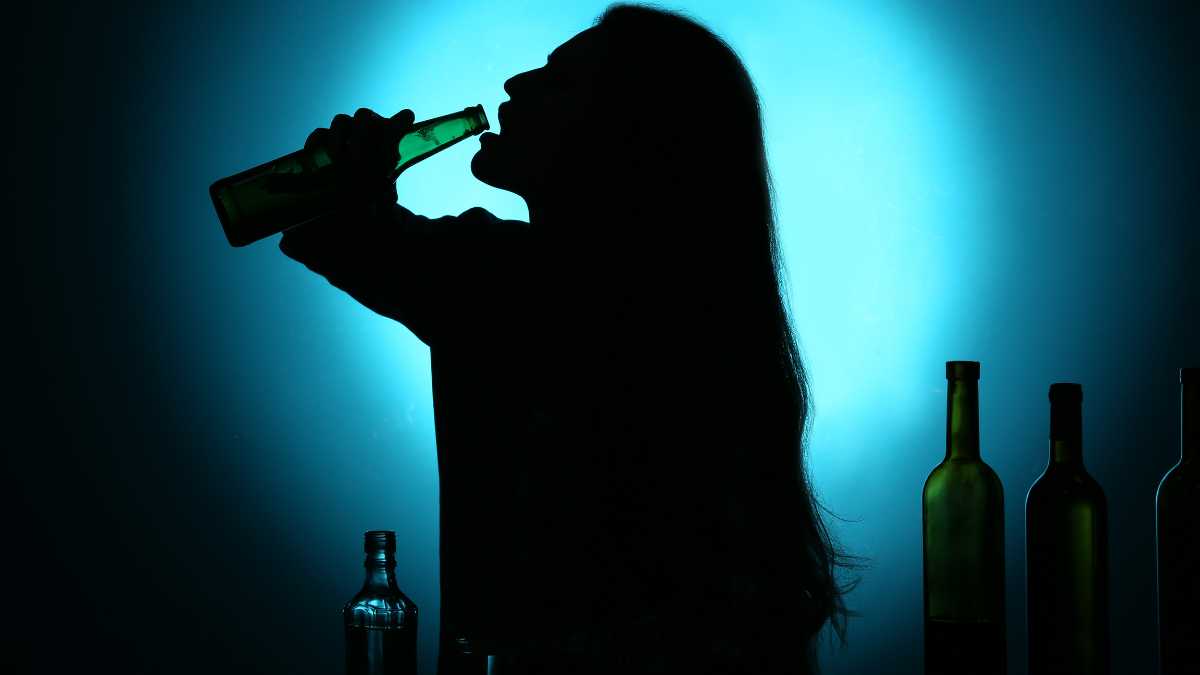It can be difficult for many people to tell whether their drinking patterns are the patterns of an “alcoholic,” in part because the word is so loaded with meaning, and means so many different things to different people. In fact, even very excessive alcohol use does not always qualify as addiction per se. People can use alcohol in very high amounts and not necessarily suffer from physical dependence or emotional dependence.
America has a very notable drinking culture. Experts estimate that over one third of the country’s population regularly engages in heavy alcohol consumption. On the other hand, 12% of the population currently suffers from a true physical addiction to alcohol.
While the latter number is certainly high, it demonstrates how difficult it can be even for heavy drinkers to determine if they have a problem.
What is heavy alcohol consumption? What is problem drinking? Is casual dinking the same as moderate alcohol consumption? And how do you know if you’re addicted to alcohol?
Read on if you are ready to clear up your confusion about these common terms.
Problem Drinking vs. Casual Drinking vs. Alcoholism
Alcohol sits in a unique danger zone, powerfully addictive yet slower to hook than Opioids or meth, luring users into excess before dependence strikes. Not every drinker becomes an alcoholic, but the line blurs fast.
Here's how they stack up:
| Drinking Type | Frequency | Control Level | Key Signs | Risk Level |
|---|---|---|---|---|
| Casual/Social | Occasional (1-2x/week) | Full control | Drinks for fun, no cravings | Low |
| Problem/Heavy | Frequent binges (4-5+/occasion) | Partial control | Tolerance building, excuses to drink | High |
| Alcoholism (AUD) | Daily/compulsive | No control | Cravings, withdrawal, life disruption | Critical |
Call Design for Recovery to Begin Your Healing Journey!
Reach out to our team to discuss sober living options and next steps toward a healthier routine.
What is Alcoholism?
Alcoholism can manifest in just about anybody. The tragic condition does not differentiate based on age, gender, or personal situations. It is a legitimate disease that makes it almost impossible to function and can even lead to irrational decisions and disastrous consequences. Alcoholics cannot control how much or when they drink. Even when they realize how harmful their habits are, they find it difficult, if not totally impossible, to stop.
What is Casual Drinking?
Casual drinking is an approach to drinking that is less uncontrollable than alcoholism. People with alcohol use disorder feel a compulsion to drink all the time and often drink every day or even throughout the day. Casual drinkers, on the other hand, drink alcohol on an occasional basis. They do not rely on alcohol as a coping tool or a strategy for handling difficult emotions. They also feel no internal pressure to drink. As non-addicts, casual drinkers do not experience physical or emotional cravings for alcohol. Instead, casual drinkers drink for pleasure when and only when they want to do so. Sometimes known as “social drinkers,” casual drinkers may occasionally have one or two more than they should and wake up with a bit of a headache, but they can chalk that up to a personal decision to party the night before.
What is Heavy Drinking?
Heavy drinking is a form of problematic drinking, but it should not be mistaken for alcohol addiction. Heavy drinking refers to a quantity of alcohol, not the compulsion to drink it. Problem drinkers drink more alcohol than is recommended or healthy, but they do not necessarily have an addiction.
This means that they still have the ability to stop if they so choose. In this sense, heavy drinking or problem drinking can sometimes be classified as a form of casual drinking. Arguably, heavy drinking exists in the gray area between casual drinking and full-fledged addiction.
By far the most dangerous and sadly also the most common type of heavy drinking is binge drinking. According to the Centers for Disease Control and Prevention, binge drinking is defined as consuming 5 or more drinks for men or 4 or more drinks for women during a single drinking occasion.
Contact Design for Recovery Today!
Fill out our quick form to connect with a peer mentor and learn how our sober living community supports accountability, structure, and personal growth in recovery.
Does Heavy Drinking Lead to Addiction?
While heavy drinking isn't addiction yet, the connection runs deep. NIAAA data show binge drinkers are 3x more likely to develop alcohol use disorder within 5 years.
Heavy sessions build tolerance over time, turning "weekend fun" into physical dependence where your body demands more to feel normal. That emotional pull grows, too, as alcohol becomes the go-to crutch for stress, boredom, or tough days, making it harder to walk away.
Not everyone crosses into full alcohol use disorder, though. Genetics and family history stack the odds (relatives with addiction double your risk), while early trauma or constant stress often light the fuse.
The key is to spot these warning signs early to change course before control slips away completely.
What is Healthy Drinking?
Heavy drinking is a form of problematic drinking, but it should not be mistaken for alcohol addiction. Heavy drinking refers to a quantity of alcohol, not the compulsion to drink it. Problem drinkers drink more alcohol than is recommended or healthy, but they do not necessarily have an addiction.
This means that they still have the ability to stop if they so choose. In this sense, heavy drinking or problem drinking can sometimes be classified as a form of casual drinking. Arguably, heavy drinking exists in the gray area between casual drinking and full-fledged addiction.
By far the most dangerous and sadly also the most common type of heavy drinking is binge drinking. According to the Centers for Disease Control and Prevention, binge drinking is defined as consuming 5 or more drinks for men or 4 or more drinks for women during a single drinking occasion.
The Danger of Binge Drinking
Binge drinking is linked to an increased risk for many injuries, diseases, and alcohol use disorder. Unfortunately, binge drinking is extremely common, especially among young people in high school and college, where the behavior is often normalized to the point of being a cultural expectation. For those struggling with excessive drinking, understanding how to recover from binge drinking can be crucial to breaking this harmful cycle.
Moreover, the prevalence of alcohol consumption in higher education environments is significant, with some institutions standing out for their heavy drinking culture. Find out which college consumes the most alcohol to see the broader context of this issue.
Getting Help with an Alcohol Problem in Sober Living
Sober living homes provide young men the structure to turn heavy drinking or addiction into lasting independence, peer accountability replaces coping with booze, daily routines build real skills, and brotherhood turns isolation into support.
Residents practice handling tough emotions without drinks, form sober connections, and launch careers that make relapse unthinkable. No matter where you stand on the drinking spectrum, structured living accelerates the shift to confident, substance-free thriving.
Ready to Build Your Sober Future? Reach out at (424) 242-1130 or explore sober living programs to connect with mentors guiding the same path.
- Problem Drinking vs. Casual Drinking vs. Alcoholism
- What is Alcoholism?
- What is Casual Drinking?
- What is Heavy Drinking?
- Does Heavy Drinking Lead to Addiction?
- What is Healthy Drinking?
- Getting Help with an Alcohol Problem in Sober Living
Begin Lasting Sobriety Now!
- https://medlineplus.gov/alcoholusedisorderaud.html
- https://www.cdc.gov/alcohol/about-alcohol-use/
- https://www.cdc.gov/alcohol/excessive-drinking-data/
- https://www.cdc.gov/alcohol/fact-sheets/states/excessive-alcohol-use-united-states.html
- https://www.niaaa.nih.gov/publications/brochures-and-fact-sheets/understanding-alcohol-use-disorder







Written By
David Beasley